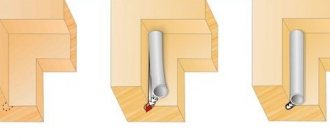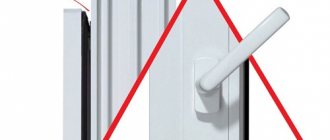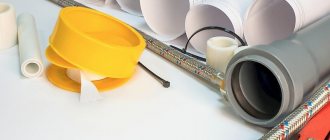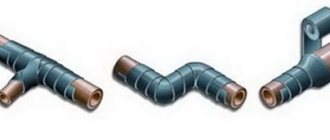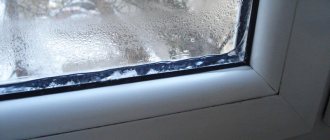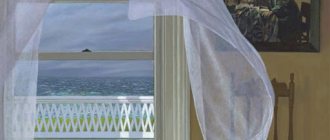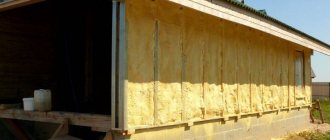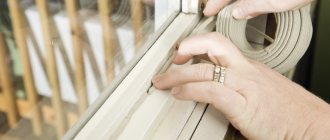Reasons for blowing
It is not enough to just insulate the frames. It is necessary to identify the place that has become a conductor of cold. The most common causes of leakage are:
- windowsill;
- slope;
- sashes and frame;
- glass.
Bridges and gaps often form at the bottom of the window sill, which may not be noticed. Insulation materials on slopes deteriorate or are missing altogether. The wood of frames and sashes may be subject to shrinkage and subsidence. Due to the movement of the soil, cracks form under the building. In places where the glass is adjacent to the frames, drafts may occur. The putty only lasts a few seasons, so it needs to be renewed periodically.
Due to gaps in window frames, significant heat loss can occur
It is difficult to identify places of blowing visually, so their presence is checked in several ways. A wet hand or a lit candle is brought to the window. Wet skin is very sensitive and will immediately feel the slightest air currents, and the flame will fluctuate under the influence of a draft. Windows in good condition need to be insulated around the perimeter, but for heavily damaged structures, all cold bridges must be removed.
You will see how to properly insulate wooden window frames in this video:
Types of insulating tapes and tape
Insulation sheets and tape have a number of advantages over other methods of window covering:
- The base will last for several years without replacement.
- Pasting is carried out independently, quickly.
- No additional materials are required.
- The adhesive base leaves no traces when peeled off and does not interact with the material to which it is glued.
But it is worth considering the disadvantages of this method:
- Covered openings cannot be opened.
- If the strip is poorly glued or of poor quality, then removal will be difficult and there will be tears.
There are two types of insulation sold in stores and markets:
- Pasting. This type has a lot of grip. Polyvinyl chloride, rubber raw materials, and foam rubber are used for its production. It has good flexibility and simply compresses to the required size. Stripes are available in black, white and brown colors. It is written on the packaging what size gap the fabric is suitable for.
- Sealing. This type is characterized by a void inside the tube, which helps retain heat. One side is equipped with an adhesive layer. The 7 mm gap is tightly blocked and can withstand all temperature changes. The color of the strip is chosen to match the color of the glass unit.
The durability of the glued tape must be checked annually. If replacement is required, then do it for the entire strip or a separate fragment.
Methods for insulating windows
How to insulate windows for the winter? Let's figure out what methods exist to avoid heat loss in an apartment through windows.
Paper strips
Window insulation can be done by using a proven method of sealing cracks using newsprint, proven by practice and confirmed by many years of experience. To do this, old newspapers or other paper were soaked in water. The paper pulp obtained during this process was used to seal gaps between frames, glass, glazing beads, etc. To seal large cracks, paper tubes were used, which were also soaked and, in this state, stuffed into the cracks.
Further. Right! Decor and additional thermal insulation - the joints at the top were necessarily glued with strips of the same newspapers or other paper. The glue for these stripes was laundry soap diluted in water. It was applied to strips of paper, which were then quickly glued to the desired location.
The positive aspect of this method is the poor thermal conductivity of water and high adhesion (ability to stick) to the painted surfaces of frames. The disadvantage of this process is its tendency to leave marks - the remains of paper pulp and newspaper strips are very difficult to scrape off from window frames. What is the best way to insulate windows in an apartment using other “neat” methods?
Fabric stripes
Insulating windows using cotton wool and fabric strips has brought some “convenience” to the process of insulating windows. Cotton wool (technical) was more simply pushed into all available cracks of the window, and on top it was sealed with soapy strips of fabric. The pores between the fibers of cotton wool, filled with air, are an excellent heat insulator.
In addition to this, such strips are very easily removed when removing insulating materials, without destroying the paintwork and without leaving visible traces of their presence on the window frame.
In some cases, this method is still relevant today, due to its low cost and effectiveness. It is advisable to modernize it somewhat - still use cotton wool as a heat insulator, but masking tape can decorate it, which also does not leave marks on the surface of the frame.
Attention! Again! Use masking tape correctly. By choosing ordinary stationery tape, you run the risk of getting yourself an activity in the spring, the meaning of which will be the difficult removal of glue from frame sashes
Thermoleks tape – used for sealing windows
Foam rubber and tape
To insulate windows in an apartment for the winter, foam rubber and tape can be used. This method is especially relevant for opening window sashes.
Modern heat-insulating foam tape has a self-adhesive layer, which simplifies its installation along the perimeter of the window frame. The cracks can be sealed on top with masking tape, which can simply be removed during spring warming and the foam rubber left.
Foam rubber - self-adhesive tape
Foam rubber has one significant drawback - after 2-3 years it will become completely unusable and will “demand” its replacement.
Tape for sealing windows - masking tape
Paraffin filling
Small cracks in the frame can be filled with molten paraffin drawn into a syringe. When sealing large cracks, you can use additional filler, for example, pieces of rope, which are tamped into the crack and filled with molten paraffin.
Swedish technology
This is not for you to stick tape on the frame. This method can be called more correctly and succinctly - reconstruction and insulation of windows with groove insulation (this is no longer foam rubber).
The window in the apartment is not sealed with any materials and can be opened freely even in winter. The use of high-quality insulation will ensure high-quality thermal insulation of window frames for 12-20 years.
Swedish technology of groove insulation. And foam rubber can be glued between the sashes.
Technology of groove fastening of insulation
Additional procedures
When insulating windows, you cannot bypass sealing the contact areas of glass and frames. For this it is advisable:
- remove the old bead,
- pull out the glass;
- clean a quarter of old mastic and debris;
Removing old “putty” materials
- clean the edge of the glass;
- coat the quarter with a thin layer of sealant;
- insert the glass into place;
- nail a new bead.
This set of actions and the materials used will improve both the thermal insulation qualities of the window and its ability to absorb street noise.
Materials for sealing cracks may vary
Swedish technology for insulating wooden windows
Step 1. We inspect the condition of the wood. It is important that the doors, if they are old, are strong enough and do not crumble into dust. We also carefully examine the lower part of the sash - this is where the wood most often rots under the influence of moisture.
We check the condition of window fittings. Tighten the screws if necessary. If there are small cracks in the windows, we fill them with wood putty. If necessary, remove the old paint and sand the wood with sandpaper. All actions in this step should be aimed at identifying and eliminating minor frame defects.
Preparing windows for insulation using Swedish technology
Step 2. Prepare the tools. You will need the seal itself, a sharp utility knife, a roller for installing the seal and a router for cutting a groove on the frame.
Video clip
Step 3. Remove the frames. Using a level we make markings. It is necessary to draw perfectly straight lines so that the seal does not deform.
Using a router along the perimeter of the sash, select a groove of 3x7 or 3x5 mm. We select the groove at an angle of 45 degrees. In places where hinges are attached to the frame, we do not cut a groove. We clean the dust from the grooves with a vacuum cleaner.
Working with a milling cutter
Step 4. We begin to insert the herringbone seal into the groove, rolling it with a roller. We move the roller in the “backwards” direction (towards the already inserted edge) so as not to stretch the seal.
Seal installation diagram
Rolling the seal with a roller
Step 5. Increase the insulation effect. We remove the glazing beads, take out the glass, and apply a layer of silicone sealant to the seat. We install the glass in place and secure it with glazing beads.
If a little silicone leaks out and gets on the glass, do not smear it, but wait until it dries, and then clean it off with the edge of a utility knife.
Insulation scheme for a double-hung window using Swedish technology
Advice! If you plan to paint the window after installing the insulation, it is important that the paint does not get on the profile.
As a result of window insulation using Swedish technology, draft protection is provided, and the room becomes warm and dry. A high-quality seal will last for many years and maintain its aesthetic appearance.
An example of high-quality insulated windows
Insulation using tubular insulation
Insulation using tubular insulation
One of the most modern and effective methods. To perform such insulation, a sealant based on silicone rubber is used. The material withstands temperature changes and is not afraid of contamination. If desired, you can even paint it - this will not deteriorate its thermal insulation properties.
You can set the required diameter using plasticine. It is enough to take a piece of plasticine, wrap it in plastic wrap and squeeze it between the sash and the frame. By the thickness of the resulting “cast” you can find out the size of the gap.
The rubber seal provides reliable thermal insulation and allows for partial restoration of windows
The rubber seal provides reliable thermal insulation and allows for partial restoration of windows. But it is quite expensive, plus it requires some skills for successful installation. Suitable exclusively for windows without significant damage, which they tried to maintain in proper condition throughout their entire service life.
You can install the seal yourself. First, you need to remove the sashes from their hinges, and then mark a place in the window frame for cutting the groove. Next, you should select a groove around the perimeter of the window frame. This is easily done using a cutter. The sealant is rolled into the prepared groove. It needs to be glued. Fixation is done using glue. It must be of the highest quality and reliable so that the material does not shift or fall out. After installing the seal, all that remains is to return the window sashes to their place.
If necessary, replace the fittings and try to align the window geometry, but without the necessary skills it is almost impossible to do this. With proper installation and proper handling, the seal will last about 15-20 years.
Adhesive mounting tape
Adhesive mounting tape is used in emergency cases:
- if the seals on your metal-plastic windows are leaking, and you did not have time to call a technician before the onset of cold weather to replace them;
- you are planning to change your windows, but you don’t have enough money.
By gluing the mounting tape at the junction of the sash with the frame, you will block the flow of cold air into the cracks. The disadvantage of this method is that the glue mark on the frame is difficult to clean.
A simple way to insulate windows
Representatives of the older generation remember the times when no special materials for insulating windows simply existed. We had to make do with improvised means. And it worked out very well. If for one reason or another you cannot purchase ready-made insulation, resort to old methods of sealing windows for the winter. This will be enough for one season, and then you can think about better insulation.
The essence of insulating windows in this simple way is to seal all the cracks as tightly as possible and block access to drafts. First, you should replace cracked glass and frames, if any.
To seal cracks, you will need the simplest materials - old newspapers, cotton wool, foam rubber, paper tape, glue. Newspaper sheets are moistened with water and rolled into thin tubes when raw. Using a knife or some other sharp object, these tubes are compacted tightly into the gaps between the frames. The cracks are sealed with paper strips on top. Foam rubber is cut into thin strips and compacted in the same way as newspapers. If you use cotton wool, you need to pinch off small pieces and firmly insert them into the cracks around the entire perimeter of the window. You should also glue strips of paper on top. With the help of such simple measures you can achieve fairly high tightness of windows. But, of course, these insulation materials will only last until it’s time to open the windows. And the appearance of the windows will suffer from such insulation - when the paper peels off, the paint may begin to peel off or unsightly adhesive stains will remain on the frames. Therefore, if possible, it is still advisable to use more modern insulation methods.
How to glue
After selecting a certain insulation, all that remains is to glue it correctly. To do this you need:
An important point: the insulation should be glued in a single piece, and not in cut strips. This will ensure the best adhesion of the tape to the surface.
Complete adhesion occurs after 2 hours. To check the window for gaps and omissions, you can bring a lighter or candle to the insulation areas. If the flame does not fluctuate, then the insulation is glued correctly and there will be no heat loss. If any breakdowns are detected, the tape should be re-taped.
Related article: Maximum size of a metal-plastic window
On the video how to glue self-adhesive insulation for windows:
With self-adhesive window insulation, you can minimize heat loss in the room in a short time and create a comfortable indoor microclimate. The main thing is to carry out work on thermal insulation of windows on time - in early autumn, when the weather is quite warm.
Insulation with adhesive tape
The insulation technology is not very complicated. First of all, it is necessary to follow the sequence of work.
Plastic windows
Insulation is carried out in the following sequence:
pre-removed old insulation is used, firstly, to purchase similar material, and secondly, to pre-cut the old material to size.
gluing begins from the top of the window. As you progress, the protective layer is removed in small sections, and the tape is pressed tightly.
our video:
Important!
1. The pasted tape should not have many tears.
2. In the corners the tape is not cut, but wrapped.
Wooden windows
For these windows, in addition to adhesive tape, thin foam rubber is often used. The work is performed in the following sequence:
strips of foam rubber are cut along the window opening;
cut foam rubber is placed between the frames;
The tape is cut to the size of the window;
The tape is applied with a sticky layer to the foam rubber and smoothed with a napkin.
This insulation will last up to three years. But it’s better to do it as shown in the video:
Features and Benefits
The unique properties of self-adhesive insulation make it possible to carry out work on thermal insulation of walls, ceilings, pipes, windows, doors, basements and attics. The material is used for finishing work both inside and outside. For the production of self-adhesive insulation, rubber, polyethylene foam, PVC, and foam rubber sheets are used. Professional builders note the following advantages of this building material:
- environmental Safety;
- universal technical characteristics;
- high level of fire safety;
- light weight and thickness;
- the presence of waterproofing and moisture-resistant properties;
- resistance to negative environmental influences;
- affordable price;
- wide range of colors;
- ability to fill gaps and cracks;
- mobility;
- resistance to low temperatures;
- reliable sealing and sound insulation;
- production of insulation of different widths and purposes;
- ease of installation work.
But they also highlight the disadvantages of self-adhesive insulation, such as:
- rapid contamination and deformation;
- fragility and low resistance to mechanical damage of foam rubber insulation;
- special care for rubber insulation;
- quick drying of the adhesive;
- replacement of insulation on plastic windows is carried out by professional service organizations;
- complex process of removing adhesive traces from removed tape.
Tips for choosing
To buy a quality tape, you need to focus on the following indicators:
- Material: foam rubber, PVC, rubber, PPE. Foam tape is the most affordable, flexible, and can close gaps of different sizes, but the porous structure quickly absorbs moisture, which leads to further deterioration of the raw material. PVC is stronger, resistant to moisture, and stretches. The rubber base can be self-adhesive or sealing tape. It contains rubber, which gives elasticity and resistance to temperatures. PPE is made from foamed polyethylene. Increased flexibility allows use for small window defects. Use at elevated temperatures is unacceptable, as a toxic compound will be released.
- Manufacturers. A lot of them. There are films from domestic representatives, and others from foreign ones. The most common ones can be identified: Profitrast, KIMTEC, Sanok. Domestic brands are not inferior in quality to foreign ones, as they are produced according to European standards and technologies.
- Price. The tape can be purchased by the meter or by the coil. Domestic materials are cheaper than foreign ones. So, Russian-made tape costs about 15 rubles per meter, and German quality tape costs 50 rubles.
Application area
There are several types of PSUL seals, depending on the scope of application and installation conditions. They can be used in any case for waterproofing. But in addition to this, they perform the functions of sound insulation, steam and heat insulation.
For example, when replacing old windows with new ones, a weak point immediately appears - the junction between it and the wall. Most often it is filled with polyurethane foam. But it deteriorates very quickly during operation. Especially if there is increased exposure to moisture and sunlight. In order to fill the resulting gaps efficiently and profitably, Psul Robiband tape is used. It is also capable of protecting the polyurethane foam itself from destruction.
Another area of application is balcony blocks. The most commonly used tape here is butyl psul. In addition, this material is suitable for roofing under certain conditions. Its main quality is sufficient here - waterproofing. It seals drainage joints, joints of roofing materials, attic windows, etc.
Characteristics of insulation
Before using insulation for windows, you need to get acquainted with them, find out their advantages, identify disadvantages, and divide them into types. This section will help you gain useful knowledge about this type of window seals.
Types of seals
The most common are self-adhesive tapes made of rubber and foam rubber. Self-adhesive window insulation can be easily fixed with your own hands by simply removing the protective film from the side where the adhesive is applied. The shelf life is no more than 3 years, after which the foam wears out and the rubber loses its shape.
Self-adhesive rubber tape - suitable not only for windows, but also for doors and hatches
- Another type of insulation is tapes that do not have an adhesive base. To fix it, you need to purchase a special glue (silicone sealant is suitable), which is applied directly to the window frame. The price of such tapes is significantly lower than all other types.
- Groove seals are suitable for plastic and wooden windows, which are manufactured using modern technologies. The insulation is a tubular cord made of silicone or thermoplastic elastomer. The peculiarity of the products is their long service life, about 15-17 years.
Sectional view of groove seal
Benefits of use
- Simple and convenient installation on any surface. You don't need any special tools or any skills for this process, a little instruction before use and your windows will no longer create drafts.
- Visually, window insulation is almost invisible. They can be matched directly to the color of the window: white, gray, brown and many others.
- The seal does not create unnecessary problems when closing the window; it is quite elastic. At the same time, air permeability in the room increases, which has a beneficial effect on both people and indoor plants.
- It is worth noting the resistance to low temperatures. The temperature range at which insulation for window frames does not lose its working properties is quite large: from + 45 to – 50 degrees.
Flaws
Short service life. Every few years you will have to replace the old seal with a new one, spending not only money but also time on this. Low wear resistance. Foam products begin to crumble over time, while rubber products lose their original shape. The need for preparatory work. This is because the adhesive is unlikely to adhere to dirty or uneven surfaces.
Therefore, it is very important to degrease and remove all irregularities from the window frame.
Seals for plastic windows
These seals are divided into two types. The first ones are in contact with the glass packages and are installed between the bead and the glass itself, as well as between the glass and the frame. The second type of seal provides protection from external factors and irritants. This is the seal of the sash and the vestibule.
An effective seal is an essential part of the design of a modern plastic window.
On plastic windows from different manufacturers, seals of various configurations can be installed, differing, among other things, in the material of manufacture.
Sealant for plastic windows
| View | Description |
| Black sealing elements are vulcanized rubber products. The cheapest profiles with a short service life. They seal windows well, but they crack quickly. | |
| Silicone seals (abbreviation VMQ) are popular due to their durability and resistance to ultraviolet radiation, ozone, and oxygen. Does not change its characteristics during temperature changes, down to -40 degrees Celsius. However, silicone seals are more expensive than rubber ones, and their mechanical strength leaves much to be desired (they tear easily and are often damaged by animals). | |
| Modern seals made of EPDM rubber (used by Rehau, KBE, Veka). They have the best indicators of strength, durability, mechanical strength and chemical resistance to adverse factors. Do not crack and do not absorb moisture. Provide reliable insulation of window frames. EPDM profiles are available in black. During installation they may stain the window frame a little. | |
| Q-Lon Schlegel seals. German profiles with excellent characteristics. In the middle of the profile is polyurethane foam, which has a high restorative ability, is highly elastic and works even at extremely low temperatures. The outer layer is polyethylene - dirt-repellent, smooth, not susceptible to UV and most chemicals. The “highlight” of the profile is the fiberglass thread, thanks to which the profile perfectly retains its shape and is easily inserted into the groove. Q-Lon is available in several shades, reliable, durable and aesthetically pleasing. No lubrication required. If the outer layer is damaged, the core will begin to absorb moisture and freeze. | |
| Thermoplastic elastomer or TPE seals. Manufacturers claim a service life of profiles of more than 10 years, guaranteeing excellent performance in the temperature range from -50 degrees Celsius to +60. However, as practice shows, at low temperatures the seal becomes too hard, and accordingly, the noise, heat and moisture protection qualities are reduced. Most often, such profiles are installed in high-rise buildings under construction, because The seals are inexpensive, easily soldered into window structures and welded together, and are not flammable. When choosing a TPE seal, you need to make sure that the product is manufactured in accordance with GOST number 30778 of 2001. | |
| Seals based on modified polypropylene and TPV synthetic rubber. They are produced in various shades, but according to technical specifications, and not according to GOST. They usually last 10 years or more and are resistant to abrasion, deformation and UV. Can be glued and welded. They require regular maintenance (lubrication) and harden in the cold. Used by Wintech (plastic window manufacturer). |
Which seal should I choose? Black, white or grey? Or maybe colored?
Shades of seals
The most popular option is, of course, black. It contrasts favorably with white plastic; accumulating dust is not particularly noticeable on it.
Black seals
White and gray seals are less noticeable on the window and are quite aesthetically pleasing. But if the white sealant is of low quality, it may turn yellow over time. Otherwise, the choice of profile color is a matter of taste and purely personal preference.
Gray seal
Prices for seals for plastic windows
Sealant for plastic windows
What it is: description
The main materials from which insulation is made are rubber, PVC, foam rubber and polyethylene foam. An adhesive composition, protected with special paper, is applied to one side of the insulating tape. When applying insulation, the paper is removed.
Insulation materials are supplied in the form of cut strips, combined into reels, or in the form of formatted rolls.
Rubber
They are distinguished by the lowest price among analogues. They retain heat effectively and are attached using glue or a stapler. One of the disadvantages is poor resistance to moisture: when water gets on the rubber, the material quickly peels off.
If you buy rubber insulation, then the softest one. Rigid models do not adhere well to the window and allow heat to pass through.
Polyvinyl chloride
Reliable and environmentally friendly insulation, which has good frost resistance and resistance to deformation.
When choosing, it is important to pay attention to the rigidity of the product: overly hard models will not adhere well to the surface. Service life is 2-3 years
Foam rubber
Safe to use and reliable insulation. In addition to thermal insulation, they provide good protection from extraneous sounds. Foam insulation is supplied in the form of strips. The advantages of such seals include low cost and provision of air flow for the room.
However, in terms of thermal insulation, foam rubber is significantly inferior to PVC and polyethylene foam, plus it peels off from the surface quite quickly.
Figure: the shelf life of foam rubber is 1-2 years.
Polyethylene foam
They are bundles made of foamed polyethylene. They retain heat perfectly, provide sound insulation and even protect against moisture on the balcony. The most expensive insulation materials among those presented. Service life – 3-5 years.
Benefits and Features
The advantages and technical characteristics of self-adhesive insulation include:
- Frost resistance. Depending on the material from which the insulation is made, its thermal conductivity coefficient varies. However, for all of them it is at a high level: after application, the tape will maximally limit the contact of the room with the environment and prevent the appearance of drafts and cold bridges.
- Versatility. The insulation is suitable for cracks up to 7 mm wide.
- Reliability. The material is not afraid of temperature changes, moisture, and chemical influences.
- High-quality sound insulation. Most types of insulation can not only protect the room from frost, but also from extraneous sounds.
- Environmentally friendly. The materials do not come into contact with the environment or react with chemicals. Insulation materials are absolutely safe for human health.
- Convenience. Once applied, the insulation will not interfere with closing and opening windows. And the installation process itself will not require the help of specialists: the owner of the house will be able to insulate the window on his own.
- Low cost. Compared to other methods, self-adhesive insulation has an optimal combination of price and quality.
- Variety of colors. Among them are white, black, dark brown, which allows you to choose the material to match the windows, ensuring a harmonious appearance of the finished structure.
- Fire safety. The materials from which insulation is made are low-flammable and difficult to ignite.
The video shows self-adhesive foam insulation for windows:
One of the disadvantages of insulation is its fragility - the material is enough for one or two seasons. And also that the tape is not suitable for insulating plastic windows or loggias with double-glazed windows.
But this article will help you understand how to use foam insulation for windows and how to do it correctly.
But what self-adhesive insulation for metal doors is and how it is used correctly can be understood by watching the video in this article.
Classification of materials
You can correctly use insulation for wooden windows yourself without outside help. Most materials are designed in such a way that their application requires little or no specialized tools.
There are a lot of options for insulating windows today.
On the shelves of specialized stores there are varieties of materials:
- foam insulation for windows;
- rubber insulation tape for windows;
- polyurethane;
- polyethylene foam;
- insulation for PVC windows (polyvinyl chloride).
Also, finished products are differentiated according to the method of application:
- self-adhesive insulation for windows;
- insulation for windows for the winter, fixed using glue.
A tubular seal made of rubber is in demand. This material can be used repeatedly if necessary. An additional convenience is the ability to open windows during cold periods, since the material is glued to only one of the mating surfaces, unlike tape or paper.
Rubber tubular seal
And this is how it is fixed in the frame
Necessary conditions for insulation
To ensure the reliability of the work performed, a number of important conditions will need to be met. Before gluing window insulation, it is necessary to thoroughly wash the surface to be treated from dust and dirt. If necessary, replace cracked glass, because cold air can also be blown in through these cracks.
It is advisable to carry out all sealing work at positive temperatures in order to preserve the ductility of the materials used.
If the glass is not securely fixed, then it must be “seated” with silicone sealant. This will have an additional positive effect, since the glass will stop “siphoning”, which is already +5% in terms of heat retention in the house.
VIDEO: Insulation of window frames
Choosing the right material
Those wishing to use self-adhesive insulation for rubber windows must select a softer texture. This material, unlike hard material, will provide better penetration into all crevices, and it also has lower thermal conductivity. In addition, it is more problematic to work with hard materials.
The use of self-adhesive insulation for plastic and wooden windows helps to increase the speed of work. Simply remove the protective layer and apply the sticky side to the desired location.
When using materials without a sticky surface, it is recommended to use silicone insulation (sealant) for windows. It will withstand moisture from condensation and also has a plastic structure.
How to apply silicone sealant
For ease of application, purchase a sealant gun. Such a purchase costs about 200-300 rubles, but it will provide significant help.
Application of thermal insulating film
A practical material is insulating film for windows. It is applied both from the outside and from the inside. Despite the relative high cost of the material, it demonstrates excellent results in terms of energy saving.
As a type - energy-saving window film
Experts recommend installing energy-saving film on the inside of the window to achieve the best effect.
During application of the film, its uniform tension is ensured over the entire surface. A slight sagging of any area can lead to ruptures during a sharp gust of wind. You can get rid of the damage using tape.
More durable brands of films, also used in greenhouse farming, have a yellowish tint. They are able to withstand large temperature changes with virtually no change in their characteristics. They can also be used repeatedly, which will compensate for their increased cost relative to other brands of material.
To attach the film, use the following options:
- using a stapler directly to the frame;
- stuff wooden planks on top of the film with small nails;
- use nails with wide heads or place a strip of roofing felt or leatherette rolled up several times under them;
- fastening is carried out with paper clips.
Instead of film, you can use transparent polyvinyl chloride. The material is environmentally safe and does its job well.
Using a sealant
It is easy to find material for seals in hardware stores. Visually, they look like a tape with an adhesive layer on one side. The base consists of polymer or foam rubber. Polymers make it possible to tear off the sashes without any problems, as well as use water to clean the surface. When water regularly gets on foam rubber, the material quickly deteriorates and cannot withstand use for more than one season. It needs to be replaced by next winter.
Gluing the tapes is very simple. It is enough to cut the workpiece to the required length and then remove the paper protection from the adhesive side. It is glued both to the window frame and to the stationary part of it. This will provide reliable protection against cracks.
Fighting large cracks on an old frame
Since gluing self-adhesive window insulation in the presence of large cracks will be ineffective, in this situation an additional procedure is carried out to seal the cracks. The cavities are filled with the following materials:
The best way would, of course, be putty, which completely fills the space and does not leave cold bridges. Depending on the size of the crack, the density of the putty can be from liquid - for small cracks, to thick and viscous - for large cracks that need to be sealed.
The surface must first be cleaned of dirt in order to subsequently ensure good sealing. A retaining layer of tape or strips of paper is glued over the closed gap, which is attached to water-soluble glue, for example, PVA.
Working with plastic windows
Insulation for plastic windows is also in demand. In case of initial installation of high-quality materials, it can withstand up to 5 years of reliable protection. After this, the connections may be subject to depressurization.
During diagnosis, you can solve some problems yourself, however, you should clearly identify the cause of the problem:
- when the rubber on the sash has worn out, it needs to be replaced;
- a frame with a slope can also become depressurized, which can be solved by removing the slopes and sealing the resulting seams;
- If shrinkage of the building has occurred, then we carry out adjustment work with the fittings.
High-quality components are used so as not to carry out repairs every season.
Related article: Platbands for windows inside a wooden house
VIDEO: Insulating doors and windows using sealant
Basic methods of insulating window frames
There are various means for insulating windows, the distinctive characteristic of which is not only the price, but the following indicators:
- durability;
- fastening feature;
- ability to retain heat and resist cold.
Do-it-yourself window insulation
Let's consider several different options, with a detailed description of each type of insulation. Detailed instructions will also be given on how to secure this or that type of material with your own hands. This will allow you to choose the best option for you.
Cotton wool and tape
There is a special tape for insulating windows, which is simply glued to the frame, covering the cracks.
If you can't buy it, you can use:
- regular tape;
- cotton wool
This method is quite economical. To implement it, you need to caulk the cracks with cotton wool, using a thin, sharp object with which you can tightly push the cotton wool, and seal it on top with ordinary tape.
As mentioned above, this is an economical method, but this is, in fact, the only positive characteristic.
There are also several negative aspects.
- fragility
- low aesthetics;
- poor efficiency, especially in severe frosts.
Based on foam rubber
The second most popular is foam rubber for insulating windows, the price of which is also not high, but it:
- easy to stick;
- quite effective;
- It is equally suitable for both wooden and plastic windows.
Using foam rubber
This adhesive-based material is relatively aesthetically pleasing and is guaranteed to last for one season.
Modern and airtight
Recently, insulating windows with silicone sealant has become increasingly popular.
It is especially effective if you have:
- wooden frames;
- large or even huge gaps in frames.
Application of silicone sealant
Silicone-based sealant is relatively inexpensive.
It must be applied exactly to the gap:
- between the frame and the box;
- between frame and glass;
- between the box and the wall.
The main, undoubted advantage of this material is its high tightness. It really protects from the wind, but there is a problem - if it is applied into the gap between the frame and the box, it will be extremely difficult to clean the surface of this material.
High quality putty
Another good sealant for insulating windows is window putty. This method of insulation was used a couple of decades ago. The putty is similar to hard, rigid plasticine, but if you squish it a little in your hands, it becomes more pliable, making it easy to apply into crevices.
The putty is applied as follows:
- Having softened it, apply it to the cracks;
- if they are too big, try pushing the putty inside a little;
- After hardening, the putty will become not only strong, but also dense.
Applying putty
This material has many positive characteristics:
- quite economical;
- one block, the price of which is low, is enough for one large frame;
- does not absorb and even repels moisture.
The only visible drawback is that it takes a relatively long time to apply the insulation.
Rubber based insulation
The modern method of insulation is a special rubberized insulation.
According to consumer reviews, this method:
- reliable;
- effective;
- durable.
Naturally, its price is slightly higher than other materials, but it is worth it.
Insulation is divided into several main categories, each of which has a specific letter index:
- category “E” - thickness from two to three and a half millimeters and is optimal for insulating plastic windows for the winter;
- category “D” is a denser material, the thickness of which ranges from three and a half to eight millimeters, and therefore it is ideal for wooden frames and boxes;
- category “P” - thickness reaches from three to five and a half millimeters, it is optimal for both wooden and plastic frames.
The material does not absorb moisture, and is also effective even in severe, severe frosts, when the air temperature drops to minus forty.
Innovative material
Today, film for window insulation is also quite in demand.
It is attached directly to the glass, which allows you to:
- let in light from the street;
- reflect infrared rays;
- keep the room warm.
Film installation
When installing it, you should be careful, and it is applied directly to a clean surface with clean hands or gloves. The only thing that needs to be noted is that heat-saving film for window structures allows you to retain the heat that “comes out” through the cold glass, but does not close the cracks.
Do-it-yourself insulation of plastic windows - glue self-adhesive insulation for window frames
Plastic windows have long won a strong place in the market. Every year the number of houses and apartments in which they are installed is growing rapidly. For some reason, it is generally accepted that plastic windows themselves are very airtight and require insulation only if they have wooden frames, but this is not the case. A draft can also pass through them into the apartment. Most types of plastic windows need insulation no less than wooden ones.
For the first few years, while the rubber seals on the windows are not yet worn out, you can completely do without insulation. But if, after their installation, the thermal insulation is immediately damaged, then there is no need to rush with insulation, but it is better to call a specialist, since, most likely, the technology for their installation was violated or there is a manufacturing defect. Another reason for the appearance of cracks is the shrinkage of the house. Insulating plastic windows with your own hands is a simple process, but it requires patience.
Window seals are a great help for those who want to insulate them before the start of winter so that the temperature in their home is acceptable. After all, it has long been known that heat is lost due to micro-cracks in windows and doors. Sealing windows is a very important process. As soon as the temperature outside begins to approach zero and a frosty winter is approaching, you need to think about maintaining heat in the apartment so as not to get sick and feel comfortable.
You can resort to the old methods - tighten it with polyethylene, stick tape over the cotton wool or a special paper tape, or it is better to purchase a special insulation for window frames, perfect for plastic windows.
The most common insulation at the moment is self-adhesive tape made of rubber or foam rubber. Its main advantage is that such insulation does not need to be glued every year - it lasts for about 3 years of use, after which it wears out and must be replaced. You can seal windows yourself using self-adhesive window insulation without resorting to the help of specialists - just peel off the base and secure the tape in the right place. It can also be used to insulate doorways.


